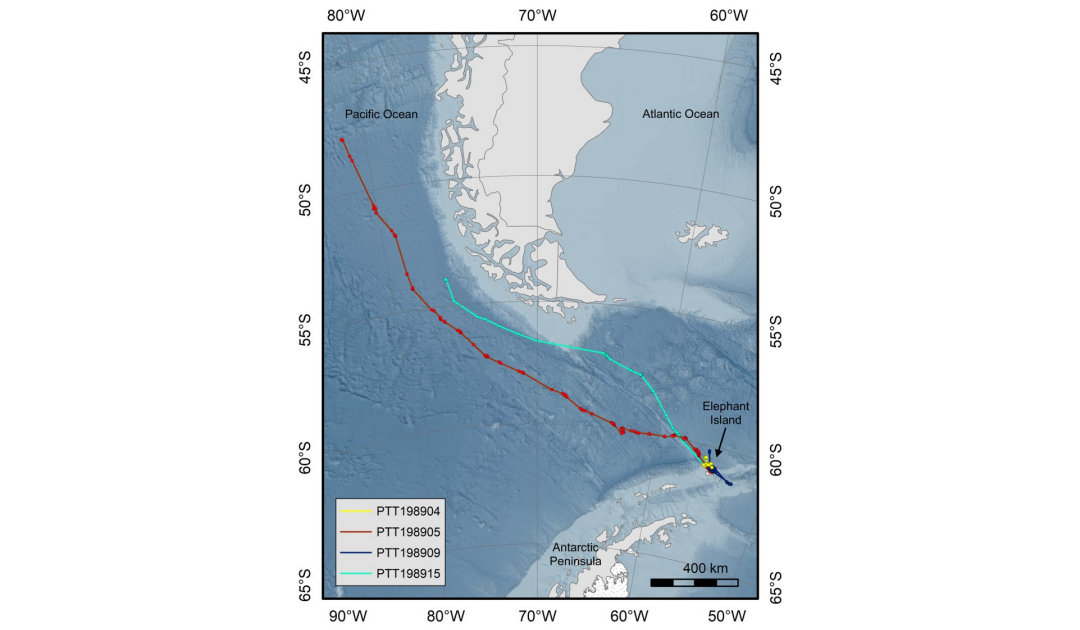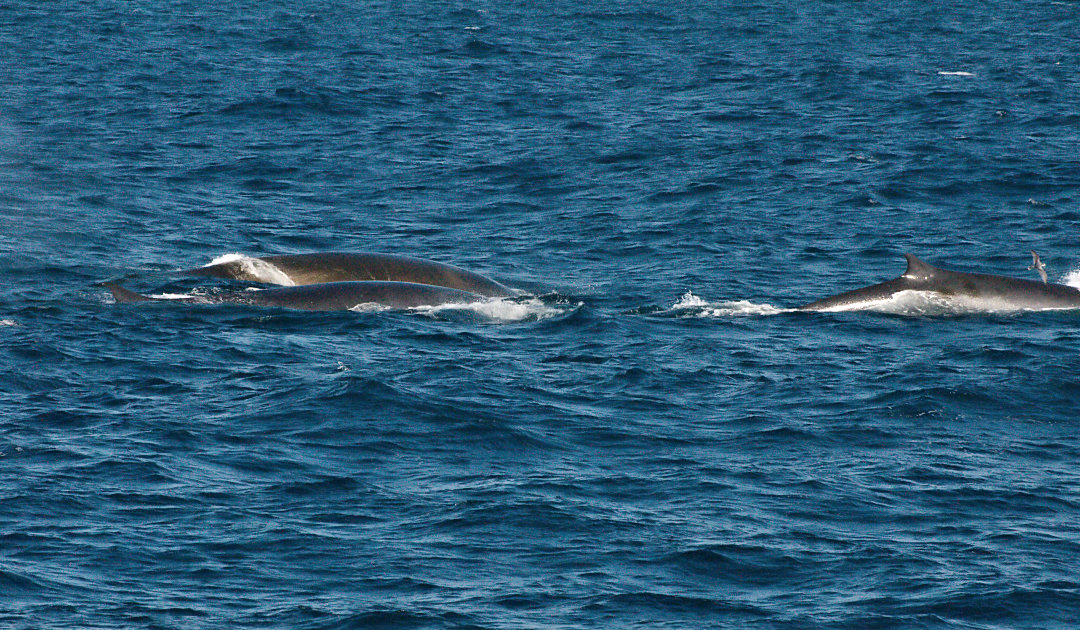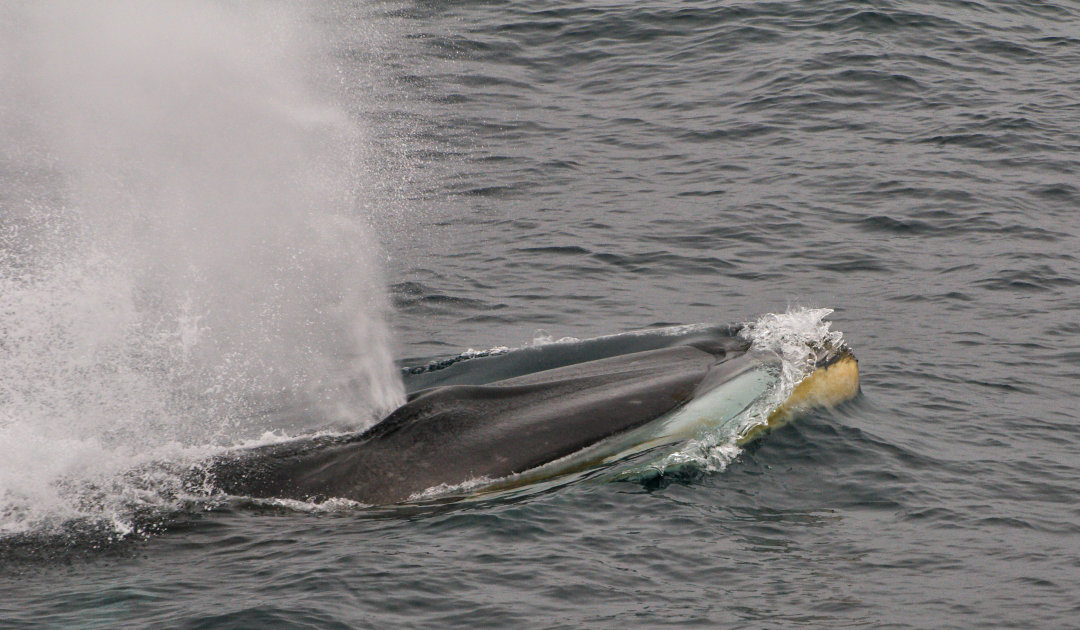
It has been dangerous for fin whales in the waters of the Southern Ocean for a long time. This is because industrial whaling caused massive damage to the second largest mammal on earth. In the meantime, stocks in the south have likely recovered somewhat. But many parts of fin whale lifestyle are still unknown to researchers. At least one aspect, however, seems to be slowly becoming clear: Where do the animals migrate to when the Antarctic winter sets in?
Filling their bellies with krill and fish in the summer to have plenty of energy for reproduction in the winter. This is the strategy followed by many marine mammals in the Southern Ocean. Fin whales, too, spend their summer months this way, also in the area of the Antarctic Peninsula. And although the animals had been hunted massively until modern times, it was not clear until now where they retreat to in autumn, when the pack ice slowly forms again. But a research team led by Dr. Helena Herr of the University of Hamburg has now discovered a possible location: the Pacific coast of Chile. This is shown by data from satellite-based trackers attached to fin whales around the sub-Antarctic island of Elephant Island. The results of the study were recently published in the journal Royal Society Open Science .


For the study, Helena Heer and her team used small satellite receivers to fit fin whales around Elephant Island with when the animals gathered in loose aggregations while feeding. Such aggregations have been observed again more frequently in the region in recent years, an indication that the numbers of once heavily exploited animals are slowly increasing again. The researcher and her team were able to attach a total of seven transmitters. Four of them provided data during animal migrations. The team focused primarily on the end of the summer season so as not to miss the start of the migration, as the tags have a limited lifespan. “Tags were programmed to transmit over 1–5 h intervals each day, up to 14 h of total transmission time and a maximum of 300 transmissions per day,” the team wrote in their paper.

The four animals, whose tags worked perfectly, started their migration in mid-April and soon moved northwest. Within five days, one of the marine mammals swam through the Drake Passage (for comparison: a ship at full power also takes 2.5 to 3 days) and then turned towards the Chilean Pacific coast. A second individual took eleven days to cover a similar distance. In the end, one of the animals had traveled about 2,300 kilometers in 16 days, which corresponds to an average daily distance of 144 kilometers, and had migrated as far as the altitude of the Chilean national park Laguna San Rafael, about 650 kilometers south of the Chilean port city of Puerto Montt. That’s where the trail gets lost, the researchers write.

However, the team said the result of their study should only be used as an indication, as the sample size was too small to draw definitive conclusions. Because until now, no one has been able to prove reproduction of fin whales along the Chilean coast. Given the length of over 6,400 kilometers, this also proves to be difficult. Nevertheless, the evidence thickens with the study. However, it also shows that fin whales of the Antarctic Peninsula are site-faithful and like to gather at Elephant Island towards the end of the season. “TThe fact that three non-associated individuals, tagged on different days, all started their migration on the same day raises the possibility of a coordinated timing of migration, at least to some degree,” Helena Herr and her colleagues conclude. And this migration seems to lead them to Chile.
Dr Michael Wenger, PolarJournal
More on the topic





